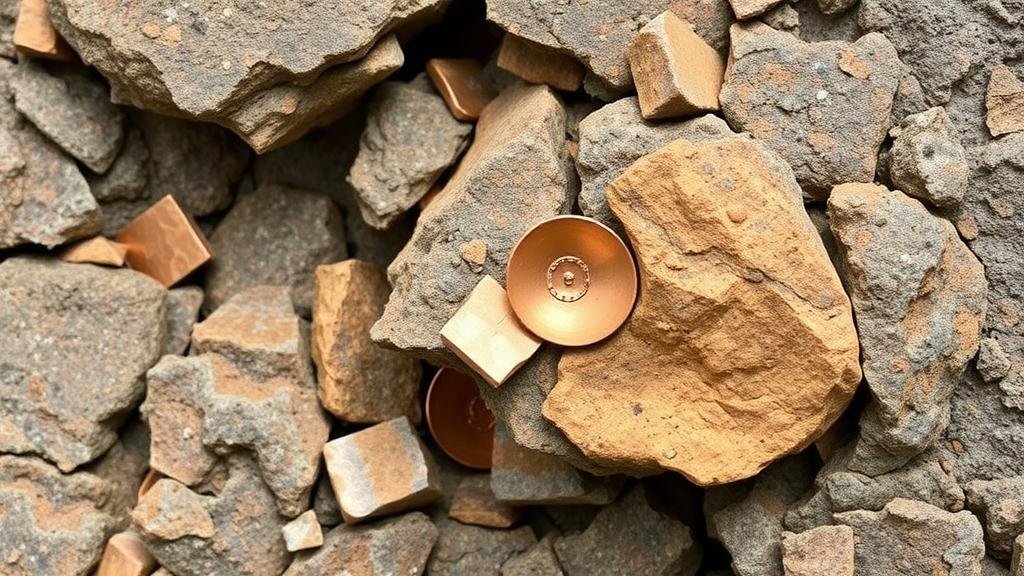How to Locate Copper in Weathered Rock Outcrops
How to Locate Copper in Weathered Rock Outcrops
Copper is a valuable metal widely used in electronics, construction, and various industrial applications. Locating copper deposits in weathered rock outcrops can be a challenging task, yet it is essential for mining and geological studies. This article explores the methodologies for locating copper in weathered rock outcrops, the geological indicators to look for, and practical applications of these methods.
Understanding Weathered Rock Outcrops
Weathered rock outcrops are exposed rock formations that have undergone alteration due to environmental factors such as wind, water, and temperature changes. This weathering process can enhance the visual identification of minerals, including copper-bearing minerals like malachite and azurite. Understanding the characteristics of weathered rock is crucial for successful copper location.
- Weathered surfaces typically show discoloration, increased porosity, and the presence of secondary minerals.
- Common types of weathered rock include basalt, granite, and sedimentary rocks, which can host copper deposits.
Identifying Geological Indicators
When searching for copper in weathered outcrops, geologists look for specific indicators that suggest the presence of copper ore deposits. These inclusions often present themselves in both physical and chemical forms.
- Coloration: The presence of distinct green or blue hues often indicates copper minerals, particularly malachite and azurite.
- Texture: Weathered zones may show increased fracturing and oxidation, which allow copper minerals to accumulate.
- Surrounding Rock Types: Copper is frequently found in association with igneous and sedimentary rocks like sandstone or limestone, especially in areas of hydrothermal activity.
Techniques for Locating Copper
Several methods can be employed to effectively locate copper deposits in weathered rock outcrops. Each technique offers unique advantages depending on the geological context of the area being studied.
- Geochemical Sampling: Collecting samples of soil and weathered rock for geochemical analysis can reveal the presence of copper through elevated metal concentrations. Statistical data suggests that copper concentrations above 500 ppm may indicate potential nearby deposits.
- Geophysical Surveys: Utilizing techniques like magnetic and resistivity surveys can detect underlying copper deposits not visible at the surface. For example, areas with increased conductivity often suggest the presence of mineralization.
- Field Mapping: Systematic geological mapping can help identify the spatial distribution of copper minerals and their correlations with rock types and structures.
Real-World Applications
Understanding how to locate copper in weathered rock outcrops is not merely an academic endeavor; it has far-reaching implications in mining and resource management. For example, the discovery of large copper deposits has led to the establishment of mining operations that contribute significantly to local economies. The Bingham Canyon Mine in Utah, one of the largest copper mines in the world, capitalized on extensive geological surveys and locational techniques, yielding over 19 million tons of copper since its inception.
Challenges and Considerations
Locating copper in weathered rock outcrops presents several challenges. The weathering process can obscure mineralized zones, and human activity may have modified the landscape, complicating identification efforts. Also, environmental regulations surrounding exploration and mining can impact the feasibility of potential projects. So, a combined approach employing various techniques while considering environmental impacts is paramount for sustainable resource extraction.
Conclusion
To wrap up, locating copper in weathered rock outcrops requires a comprehensive understanding of geological indicators, reliable techniques, and attention to environmental factors. By leveraging these methods and technologies, geologists can efficiently identify copper deposits, contributing to advancements in the mining industry and ensuring sustainable practices. For those interested in exploring copper resources, the outlined techniques present actionable strategies for identifying valuable mineral deposits.



